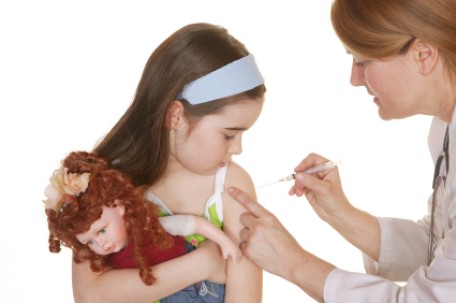Soon I will head off to Ethiopia on a charity trip. This led me to review the immunizations I will need when traveling to Addis Ababa and Bahir Dar. As per the CDC’s website, one of the immunizations I should get is a booster dose of IPV, Injectable Polio Vaccine even though I have received a primary series of Polio vaccine in the form of OPV (Oral Polio Vaccine) as a child. This booster dose of IPV is recommended for all persons traveling to areas of the world where poliomyelitis (aka Polio) is a problem. But, what is one to do? IPV is not available in a single injection for adults in Qatar. Only one month ago, IPV was introduced at the Supreme Council of Health’s Vaccine Department in combination with hib, hep B and DTaP for infants and children. Prior to this, Polio vaccine was almost exclusively given in the oral form, OPV. And, most of the private hospitals here still only carry OPV. When you live in the western world, you likely won’t have to decide between IPV and OPV for your infant or child as IPV is routinely given. Here are the things you should be aware of before you proceed in vaccinating your little one.
Polio vaccine comes in two forms as mentioned above: oral which has live weakened virus and injectable which contains live killed virus. Both IPV and OPV offer almost 100% immunity to the recipient in industrialized countries. Regardless of the type of Polio Vaccine used, the dosing schedule is nearly the same. It is usually given in a series of 4 doses at 2 months, 4 months, 6-18 months and again between 4-6 years of age. In endemic countries, a dose is also given at birth. If the fourth dose is given before the age of 4, an additional booster dose should be given regardless of how many doses were received prior to 4.
Poliomyelitis is an acute viral infection. It is highly contagious and spreads from person to person via infected mucous or more commonly by infected feces. It causes no symptoms in the majority of patients, minor symptoms(fever, headache and sore throat) in 24% and paralysis in a small minority (<1%) of those infected. It was first noted in the United States in 1916 resulting in epidemics until the 1950’s when vaccine was introduced. Let’s take a look at the differences between the vaccines and why one is given over other.
OPV causes immunity in the blood and in the intestines (where the virus multiplies) and is thought to be better at preventing the spread of polio virus among non-vaccinated persons. Therefore OPV protects the vaccinated person directly and protects others who are indirectly vaccinated by the vaccine virus. This is important in countries where polio virus is endemic. It is because of OPV that since 1979 no naturally occurring poliomyelitis has been reported in the United States. However, OPV can cause paralysis in 1 in 2.5 million who are vaccinated. This is known as vaccine associated paralytic poliomyelitis (VAPP). OPV can also rarely cause paralysis in those who are indirectly vaccinated. For this reason some countries in Europe, along with Canada and the United States have converted from the relatively cheap OPV to the more expensive IPV.
The World Health Organization (WHO) recommends vaccination with OPV in all countries where polio is endemic. Only 4 countries remain endemic: Afghanistan, India, Nigeria and Pakistan. In 1988, WHO started a global initiative to eradicate polio. Then, there were 125 countries (as opposed to the current 4) where polio was endemic and at least 350,000 children were paralyzed per year. By 2003, the number of cases of paralysis due to polio dropped to 784. These numbers are meant to highlight the importance of worldwide vaccination.
IPV is made of polio virus which is inactivated. It does not contain thiomersal and doesn’t cause vaccine associated paralytic poliomyelitis (VAPP). It is one of the safest routinely used vaccines. Some countries like Denmark use sequential schedules of IPV and OPV: 1-2 doses of IPV followed by 2 or more doses of OPV. Given in this manner, the IPV is likely to prevent VAPP while the OPV gives the added intestinal immunity to help stop the spread of disease in the event of an outbreak.
Let’s take a look at Qatar and what the WHO recommends. As stated above, all endemic countries should give OPV. All countries that border theses endemic countries should also give OPV along with countries where the potential for importation of the virus is high. Qatar has a huge population of expats from India and Pakistan who could potentially import polio to Qatar. However, let’s take a look at the statistics. In 2008, no cases of polio were reported in Qatar (http://www.globalhealthfacts.org/topic.jsp?i=40) and in 2009 & 2010 no cases of polio were reported either: http://www.polioeradication.org/Dataandmonitoring/Poliothisweek.aspx. So for at least 3 years, there have been no cases of polio.
In 2008, I delivered my 2nd child in Qatar. There were no options other than OPV in Qatar at the time. I called around. The American Hospital in Dubai offered IPV in combination to those expats who do not intend to stay in the area for long. At least that was their policy then. Our plans were to move back to the United States in early 2009 for good. This coupled with my familiarity with IPV and with what I will call my “mama bear” mode led to my choice to vaccinate with IPV instead of OPV. A word on the “mama bear” mode: All of you moms may have felt this way post partum? You know where you are super protective of your infant for a period of time after delivery. And you can understand how some moms would kill to protect their infant. In my case this ultra protectiveness lasted around a year. I just didn’t want my daughter to be the “one”. This is not to say that I wasn’t torn at the time: to do the right thing for the world and to not expose my daughter to any risk. However as there have been no cases of polio reported for at least the past three years in Qatar, then perhaps I made the right choice? She has one dose remaining in two years. Only time will tell as the world’s polio history unfolds. Perhaps, Polio will be eradicated by then. It is tough being a parent!
























Great post! I just went through the vaccination rounds with my 6 months old daughter and as you explained it is given as a ‘cocktail’ through IPV.
I was shocked to learn from my Pediatrician that many parents now choose not to vaccinate their child because ‘everyone else is’ and they think the fact that everyone is vaccinated will protect their little ones.
Do you have similar experiences with parents who choose not to vaccinate?
Thank you John for your comments. Soon I will highlight the difference between DTP and DTaP. Probably in the “cocktail” vaccine your daughter was given she received DTaP which has less side effects than the DTP. There is also an updated version of PCV which is the pneumococcal vaccine. In the USA it is now given as PCV 13. Absolutely, I go through this with some parents! It is very wrong to assume that everyone else around you will be vaccinated! And in order to eradicate polio worldwide, we all must do our part!
Hi! I just moved to Qatar, are you still here? Are you still blogging? Great site!
Welcome to Doha! I just had a look at your blog, nice as well! Thanks for the compliments. Email with questions anytime.
Well interesting research and thoughts but I do not second the recommendations of the WHO on OPV. I am living in Pakistan and OPV is the what the doctor orders but if we look at the figures of POLIO against the under 5 population of Pakistan, the figures match with 7 out of a million POLIO occurring due to OPV. So as a father I would only recommend IPV for all even in the countries where POLIO is endemic.
Zaffar Ali Khan
Sorry on the delay. Thanks for those statistics Zaffar, far higher than what is reported!
nice info mam…but india has been removed from the list of endemic countries as of 25 february 2012…..http://www.unicef.org/india/health_3729.htm…..Raghav(6th semester…mbbs)
Thanks for your reply. The link you included is broken. I wrote this article 3 years ago. It is most certain that the list of endemic countries will continue to change.
I’m getting a bit off topic here, but I’d be interested to know your thoughts on the HPV vaccine.
I advocate it and here is why. 50% of women are infected with HPV or more. There is no way to visually tell if a male is carrying it unless he also has external genital warts and it is hard to screen for. Not all HPV types are associated with cervical cancer, However, HPV is the number one cause of cervical cancer. So unless a parent can say for sure that their virgin daughter will marry a virgin husband then don’t vaccinate. Otherwise, I would. The patient would have to be counseled on risk vs in benefit. In this case the risk of the vaccine is low and the benefit high.